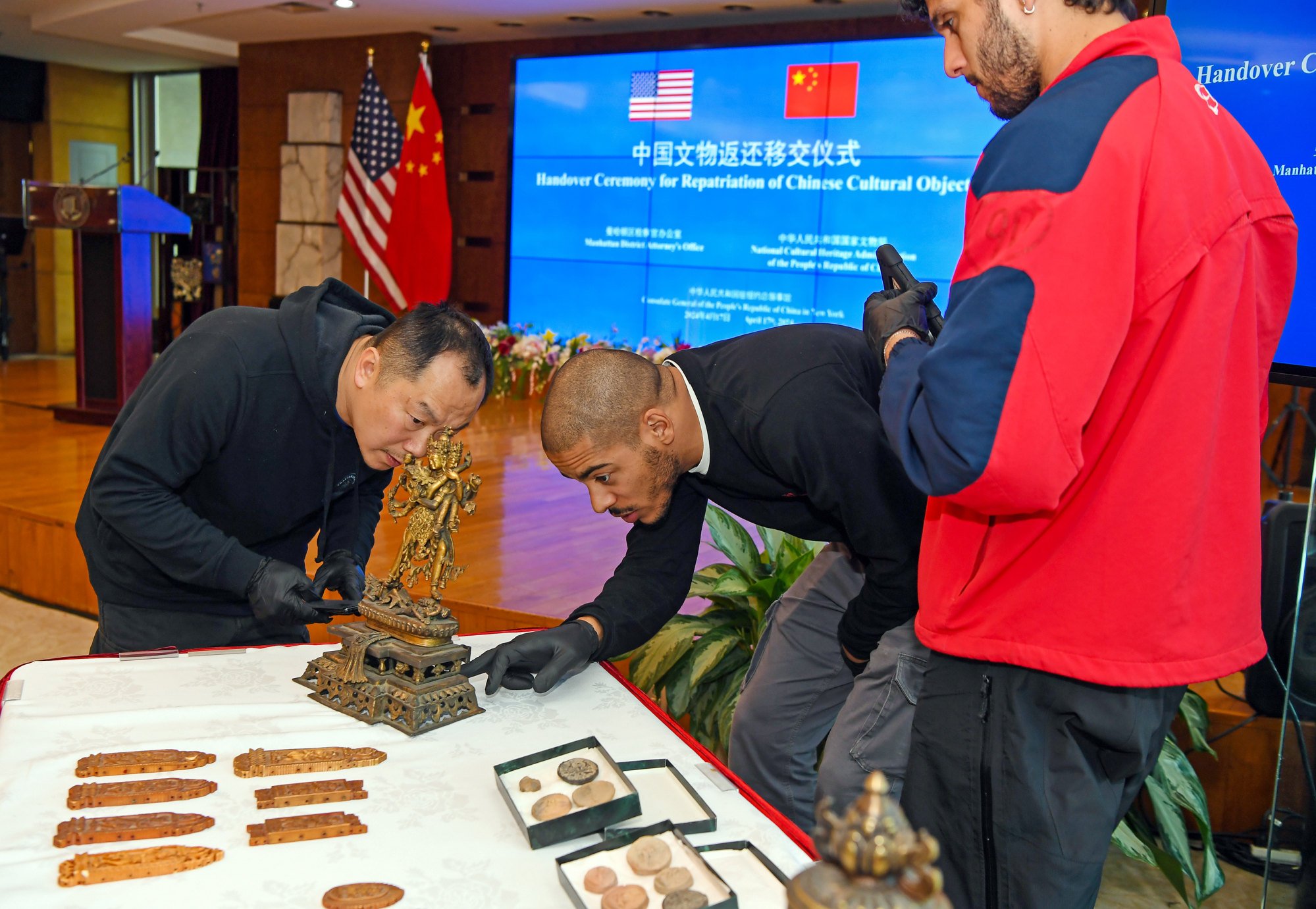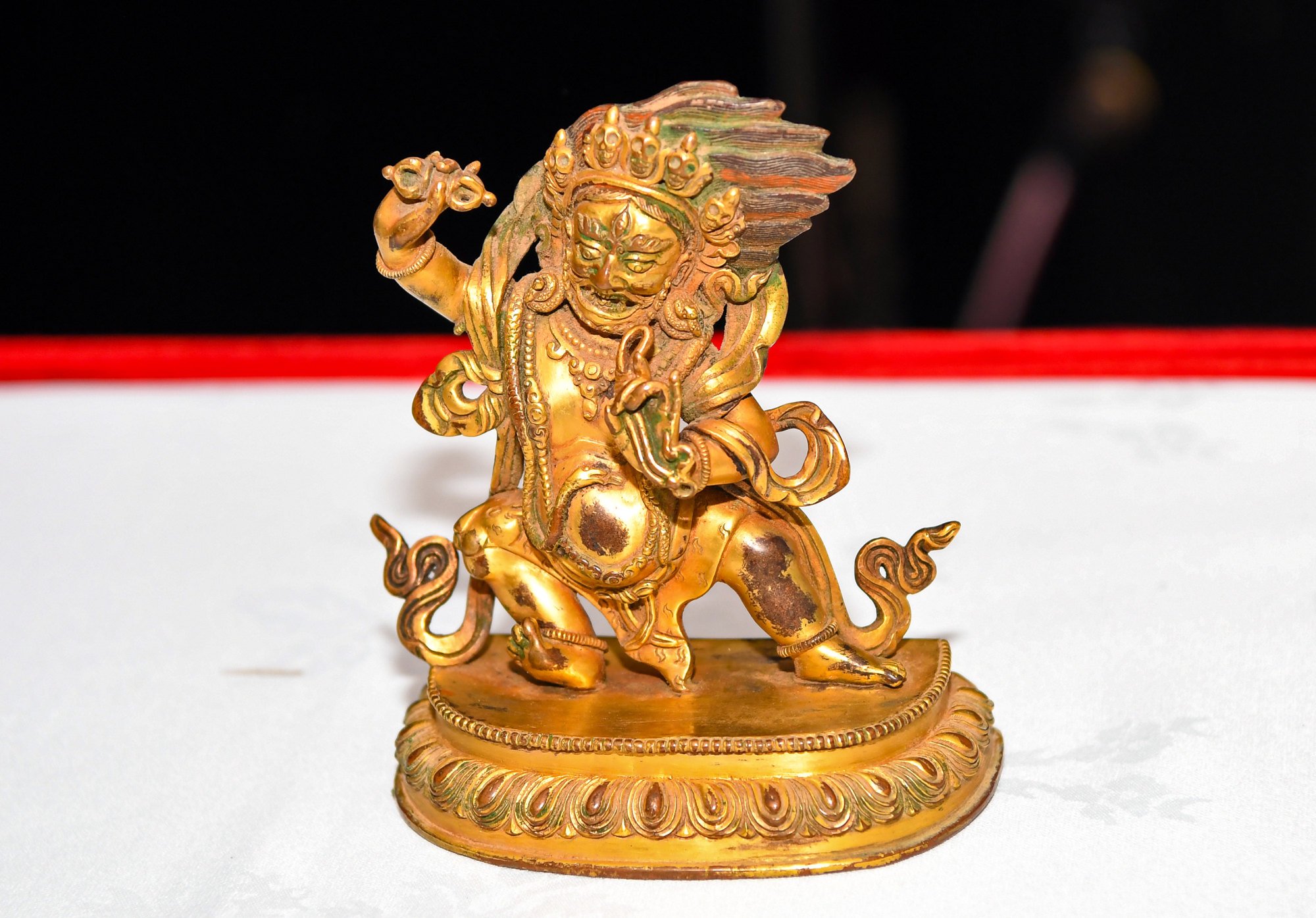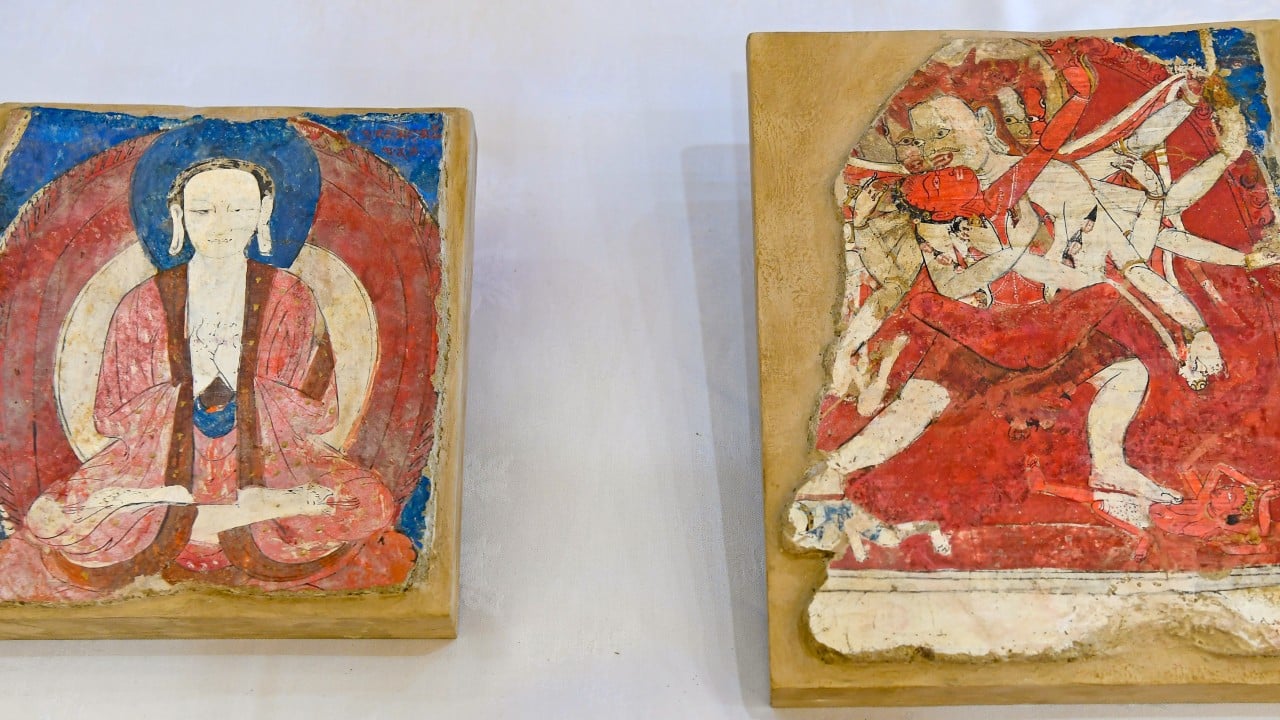The United States has returned 38 cultural relics to China as part of a repatriation deal to help Beijing retrieve artefacts that have been lost throughout the centuries.
On Wednesday, officials received the relics, which mostly dated from the Ming (1368-1644) and Qing (1644-1911) dynasties, at a handover ceremony held at the Chinese consulate general in New York.
“The latest repatriation cooperation between China and the US signifies that the two countries are moving in the same direction and have built mutual trust in the actions to retrieve lost cultural treasures,” Li Qun, director general of the Chinese National Cultural Heritage Administration (NCHA), said during the ceremony.
With this year marking the 45th anniversary of the establishment of diplomatic relations between China and the US, Huang Ping, China’s consul general in New York, said this repatriation would “greatly promote cultural exchange between [the two countries] as well as friendship between the people”.
In January 2009, the two countries signed a memorandum of understanding (MOU) outlining that the US would impose restrictions against the illegal importation of Chinese cultural property.
Since then, 504 lost artefacts have been successfully returned to China in 15 batches, the heritage administration said on Thursday.

The MOU has now been extended for a third time, effective from January this year. It means that Wednesday’s repatriation marked the first cultural relic return since that renewal.
Li said China would continue to implement the bilateral MOU and share information on stolen artefacts with the US, “contributing [the two countries’] wisdom and efforts to protect cultural property and promote cultural exchange”.
Most of the 38 antiquities that were returned this week were Tibetan Buddhist artefacts dating from the Yuan (1279-1368), Ming and Qing dynasties. They included rare ivory and wood carvings, as well as mural fragments, “with important historical, artistic and academic value”, the administration said.
They were seized by the Manhattan District Attorney’s Office in New York in March and will be transported back to China at a later date.
“Cultural heritage has the power to bring people together and bridge differences,” Matthew Bogdanos, chief of the Antiquities Trafficking Unit at the Manhattan District Attorney’s Office, said at the handover ceremony.

“The repatriation of lost cultural relics to their country of origin is a righteous act. The US is willing to work together with China to protect the shared cultural heritage of humanity, and make joint efforts towards the common goal of returning lost artefacts,” he was quoted as saying by the NCHA.
Last May, the US returned two important stone carvings to China, and in 2019, China retrieved 361 cultural relics from the US, the largest-scale repatriation of lost Chinese treasures since the MOU came into effect.
More than 10 million Chinese artefacts have been lost overseas since the opium wars of the mid-19th century, according to the China Cultural Relics Academy. This happened for various reasons, including wartime plunder and illegal smuggling.
But since the founding of the People’s Republic of China, more than 300 groups of artefacts, totalling around 150,000 objects, have been returned through law enforcement cooperation, judicial proceedings, negotiated donations and emergency rescue efforts, state broadcaster CCTV reported on Thursday.


